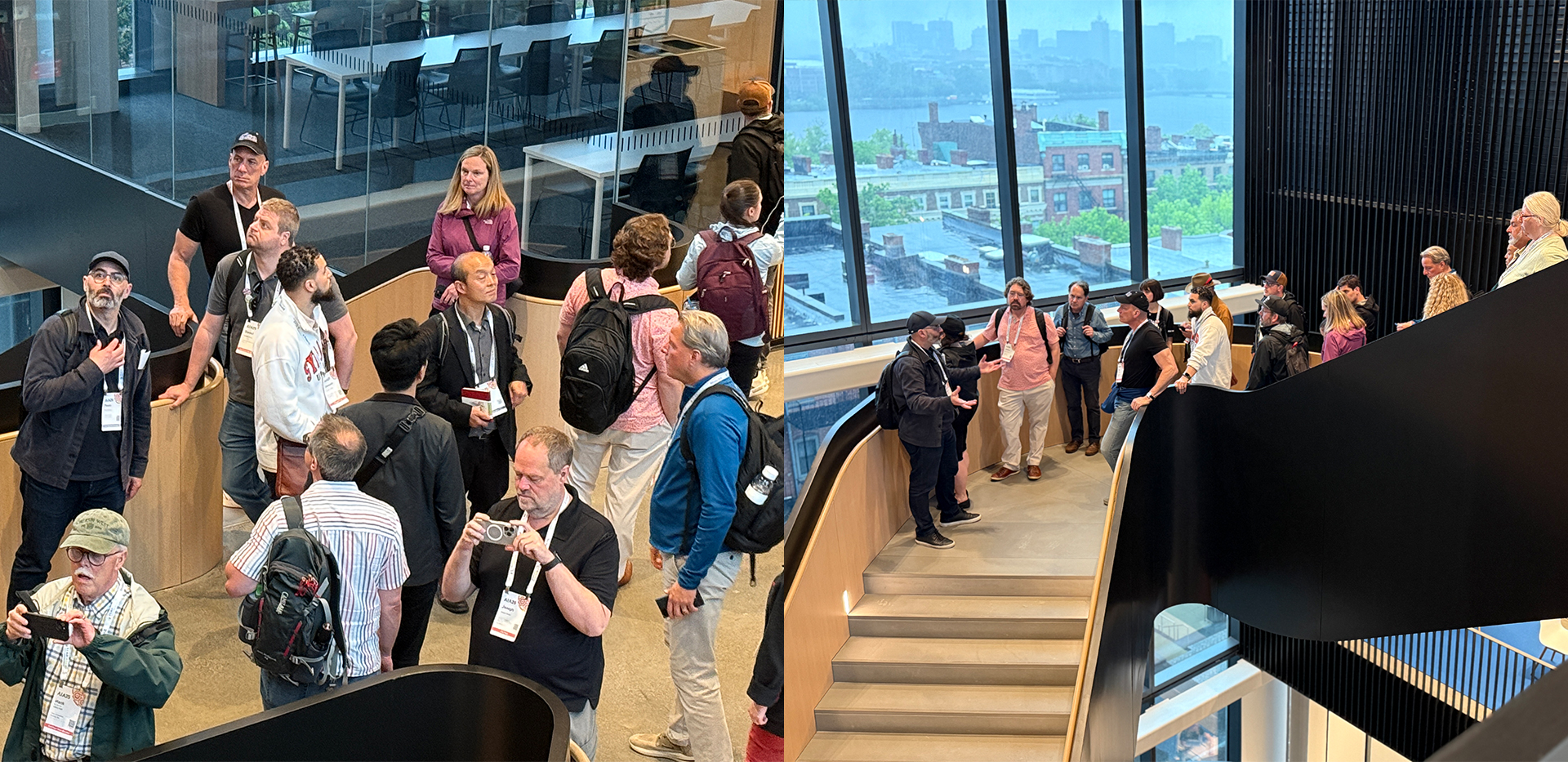KPMB Lab at Embodied Greenhouse Gas Symposium

Article content
On Monday, May 13, principal Kael Opie and Shahrzad Soudian from KPMB Lab attended the Embodied Greenhouse Gas Symposium hosted by the Schools of Cities at the University of Toronto and the Centre for the Sustainable Built Environment (CSBE), a research centre at the University’s Faculty of Applied Science & Engineering.
Helmed by seven researchers from across the University and supported by a dozen architecture, engineering and construction (AEC) companies, including KPMB Architects, CSBE is a research venture focused on developing new ways to meet the demand for housing and public infrastructure without further exacerbating climate change.
Their first-ever Embodied Greenhouse Gas Symposium brought together about 200 industry professionals, academics, and policymakers researching solutions to greenhouse gas pollution in the built environment, including Soudian, the sustainability research analyst at KPMB Lab.
During the Symposium’s poster session, Soudian presented a recent Lab study on the interior life cycle analysis of KPMB’s King East office, which we moved into in 2018. The study highlights the importance of interior design elements on the total life cycle embodied carbon of buildings and demonstrates how different design choices can reduce a building’s environmental impacts.
Comparing two design scenarios — the KPMB office and a conventional office with new furniture — the study found that key decisions made by the design team for the interior of the office (open plan office layout, low-embodied carbon palette, furniture reuse, robust and durable furniture and fixtures) resulted in significantly lower upfront embodied emissions.
Opie also presented a study on reducing the carbon footprint of concrete, based on research currently underway with values-aligned collaborators including Arup, Queen’s University, University of Toronto, AECON, Lafarge, Avenue Building Corporation, and Structurama. The most pervasive building material in the world, concrete contributes significantly to the total emissions on our planet, but with thoughtful design, engineering, and planning for efficient and effective use, its carbon content can be minimized.
)
)
)